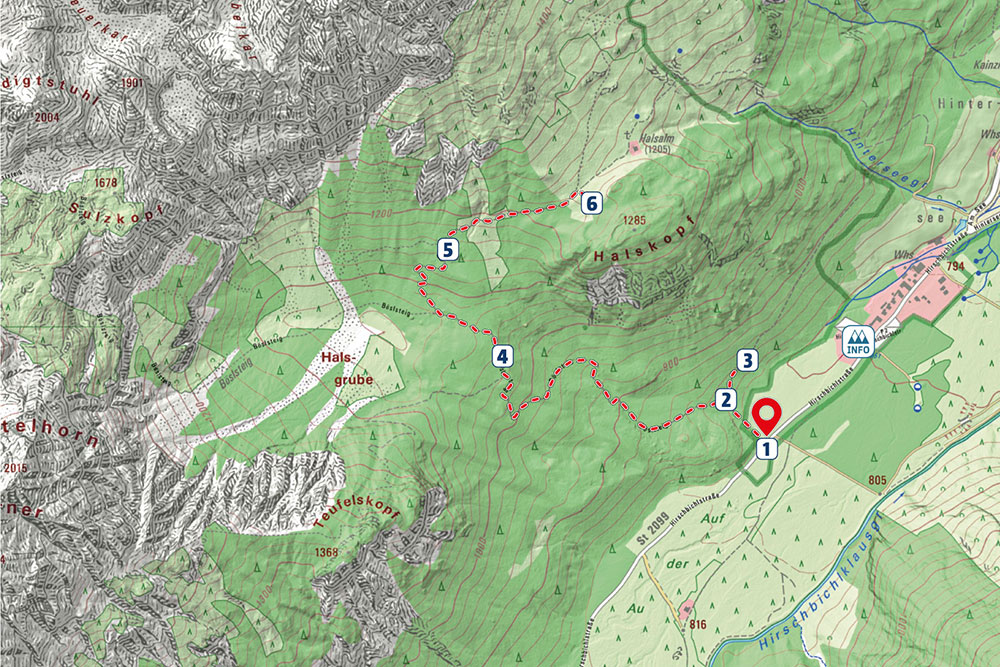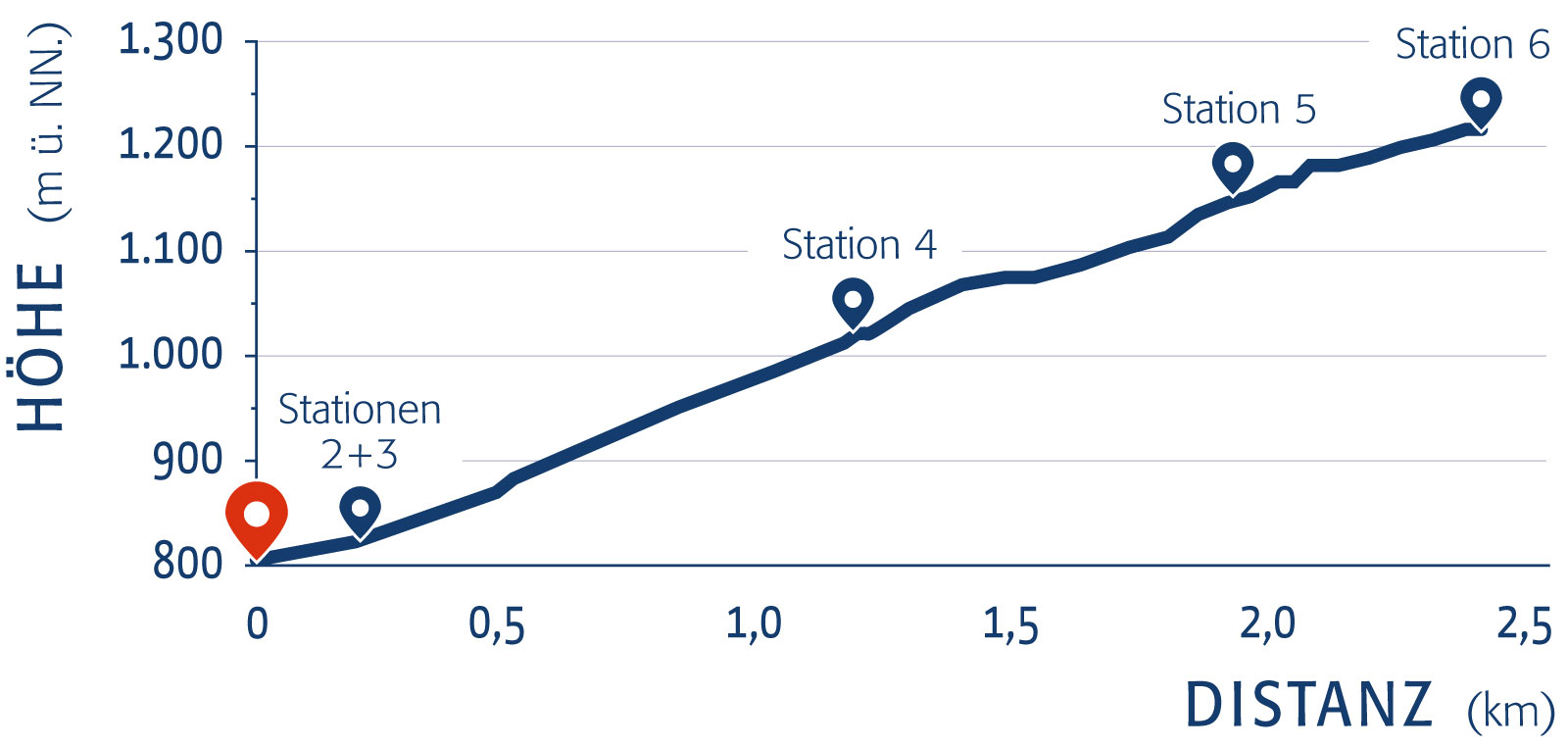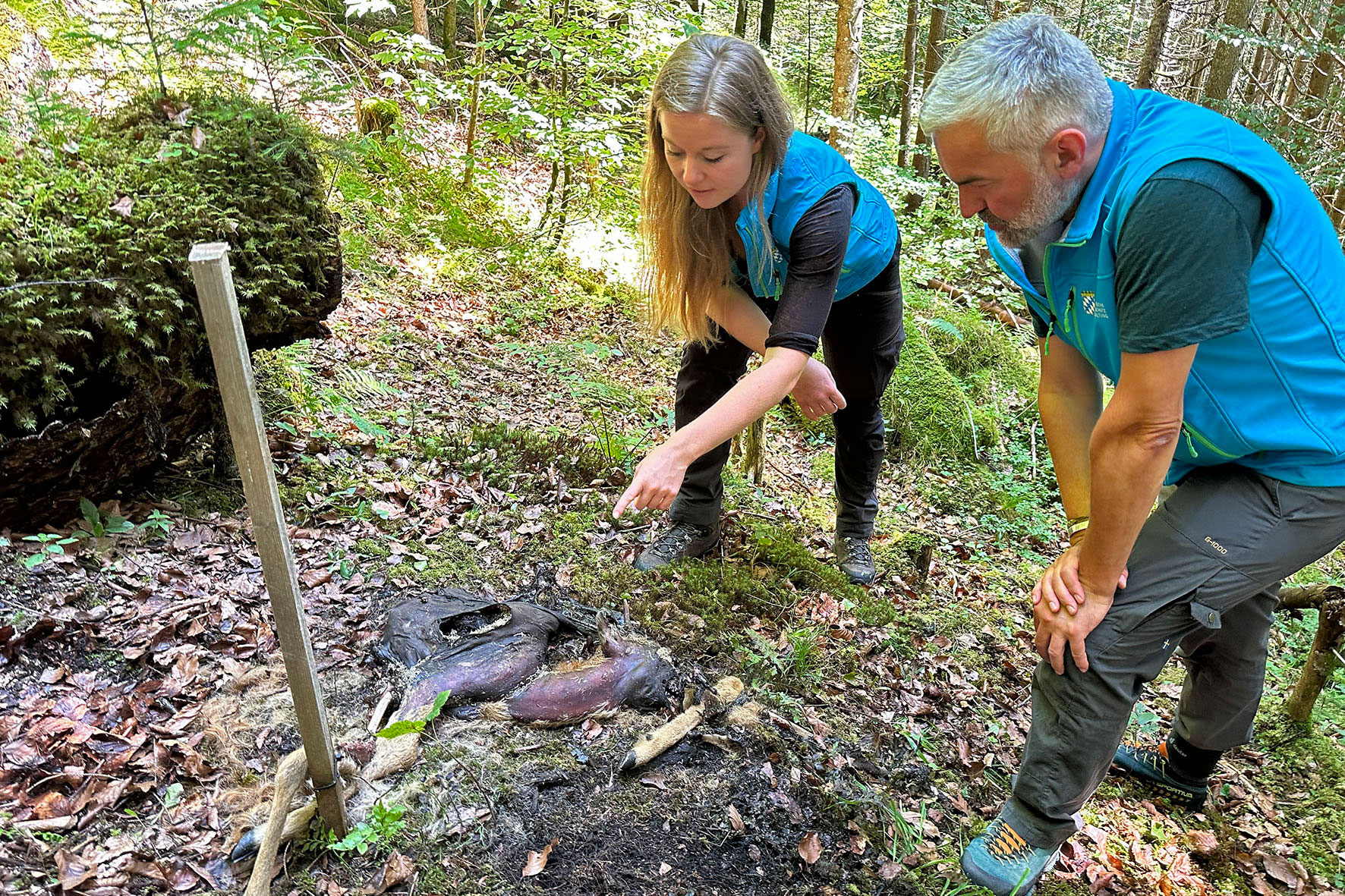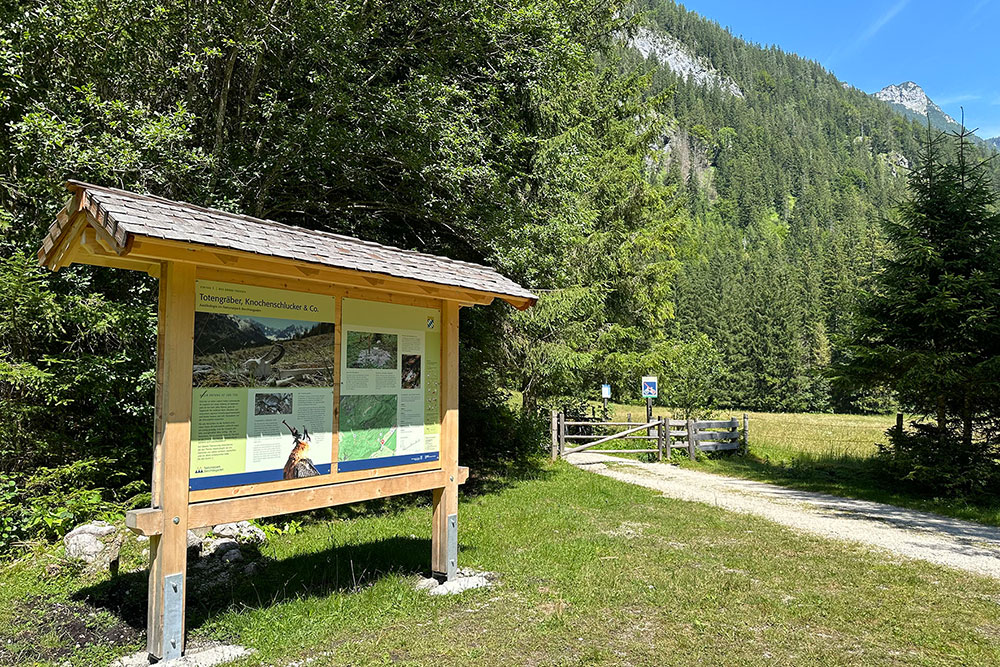Gravediggers, bone swallowers & Co.
Experience carrion live in the national park
It is teeming, scurrying, fluttering and buzzing. Millions of maggots vie for the best spots, a carrot butterfly dabs salts from its skin and carrion beetles are busy laying eggs. The body of the dead deer is littered with millions of creatures and the cycle of life begins anew.
On the new themed hiking trail in the Klausbach Valley, you can experience the exciting topic of carrion and its users live and with all your senses. By the way: bearded vultures also benefit from the death of other animals - they eat bones.
New “Carrion ecology” theme trail

On the way from the Hintersee National Park information point (“Klausbachhaus”) up to the Halsalm, you will learn lots of interesting facts about carrion ecology and the bearded vulture project.
- Station 1 - Introduction (all year round)
- Station 2 - Carrion is life (all year round)
- Station 3 - “Carrion station” - an animal carcass lies here in the snow-free period and offers fascinating insights into the decomposition processes
- Station 4 - Bearded vulture project (all year round)
- Station 5 - Bearded vulture project information stand (June to November)
- Station 6 - Bearded vulture project (all year round)

Aller Anfang ist der Tod

And it is full of life! Every end of life is also a new beginning. In the national park, carrion is not a taboo subject - quite the opposite! We dedicate a research focus to “dying” and find out how animal carcasses affect biodiversity. Animal carcasses are the most nutrient-rich form of dead organic matter. An astonishing number of species use carrion as a source of food or livelihood. For some consumers, the carrion must be fresh, others wait until there are only bones left. And still others are not picky: they take what they get.
Look, smell, marvel!

For us humans, the sight of a dead animal is often disconcerting, perhaps even creepy. And the stench ... nasty, unpleasant! All true. But for many a nose in the animal kingdom, the smell of decay is irresistible. Find out more about the exciting and “disreputable” topic of carrion on the new themed trail. Experience carrion with all your senses - but for reasons of hygiene, please do not touch the carcass.
